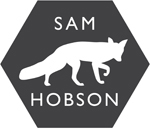I'm super excited to see my gannet / marine litter story published across 6 pages in the winter issue of Audubon Magazine - the flagship quarterly journal of the National Audubon Society. The same series has also been awarded 3rd place in the Nature Images Awards presented by Terre Sauvage Magazine and IUCN - the International Union for the Conservation of Nature.
You can read the full article online on the Audubon site here:
An Annual Rescue Mission to Free Northern Gannets Tangled in Plastic Trash
It's such an important story, which highlights the problem of plastic marine pollution, so I'm stoked to see it getting plenty of attention and exposure on both sides of the Atlantic. It's an international problem and the only real solution is education, so I'm really happy and appreciative that Audubon, Terre Sauvage and IUCN are helping to spread the word.





